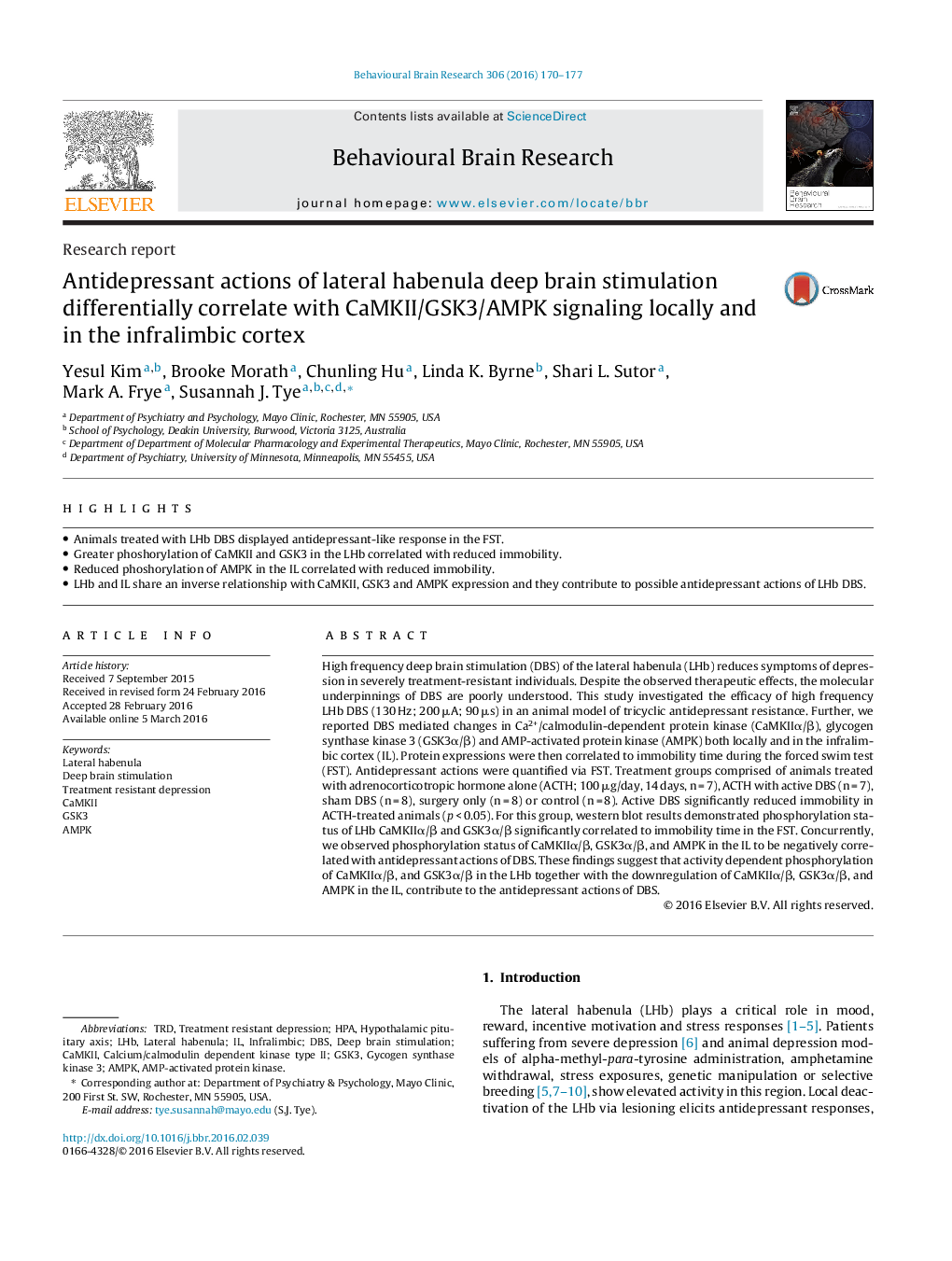| Article ID | Journal | Published Year | Pages | File Type |
|---|---|---|---|---|
| 6256102 | Behavioural Brain Research | 2016 | 8 Pages |
â¢Animals treated with LHb DBS displayed antidepressant-like response in the FST.â¢Greater phoshorylation of CaMKII and GSK3 in the LHb correlated with reduced immobility.â¢Reduced phoshorylation of AMPK in the IL correlated with reduced immobility.â¢LHb and IL share an inverse relationship with CaMKII, GSK3 and AMPK expression and they contribute to possible antidepressant actions of LHb DBS.
High frequency deep brain stimulation (DBS) of the lateral habenula (LHb) reduces symptoms of depression in severely treatment-resistant individuals. Despite the observed therapeutic effects, the molecular underpinnings of DBS are poorly understood. This study investigated the efficacy of high frequency LHb DBS (130 Hz; 200 μA; 90 μs) in an animal model of tricyclic antidepressant resistance. Further, we reported DBS mediated changes in Ca2+/calmodulin-dependent protein kinase (CaMKIIα/β), glycogen synthase kinase 3 (GSK3α/β) and AMP-activated protein kinase (AMPK) both locally and in the infralimbic cortex (IL). Protein expressions were then correlated to immobility time during the forced swim test (FST). Antidepressant actions were quantified via FST. Treatment groups comprised of animals treated with adrenocorticotropic hormone alone (ACTH; 100 μg/day, 14 days, n = 7), ACTH with active DBS (n = 7), sham DBS (n = 8), surgery only (n = 8) or control (n = 8). Active DBS significantly reduced immobility in ACTH-treated animals (p < 0.05). For this group, western blot results demonstrated phosphorylation status of LHb CaMKIIα/β and GSK3α/β significantly correlated to immobility time in the FST. Concurrently, we observed phosphorylation status of CaMKIIα/β, GSK3α/β, and AMPK in the IL to be negatively correlated with antidepressant actions of DBS. These findings suggest that activity dependent phosphorylation of CaMKIIα/β, and GSK3α/β in the LHb together with the downregulation of CaMKIIα/β, GSK3α/β, and AMPK in the IL, contribute to the antidepressant actions of DBS.
